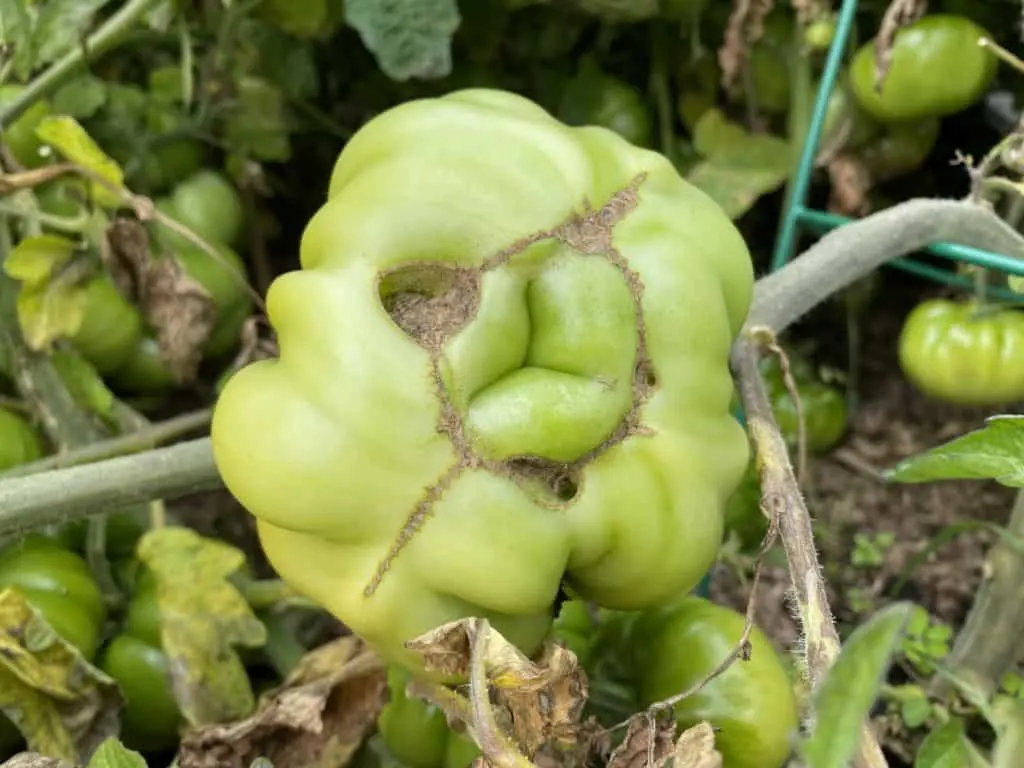
There is nothing more frustrating than waiting in anticipation for your tomato harvest, only to be faced with a daunting green or yellow crown that stubbornly refuses to ripen.
This greenish or yellowish ring is fittingly called green (or yellow) shoulders, and is hard to the touch, especially when compared to the rest of the ripened parts of the fruit.
Unfortunately, once these pesky shoulders are discovered, there is nothing you can do to stop it.
However, there are ways to prevent green and yellow shoulders from occurring altogether. And luckily, it’s all easy.
What Are Green Shoulders?
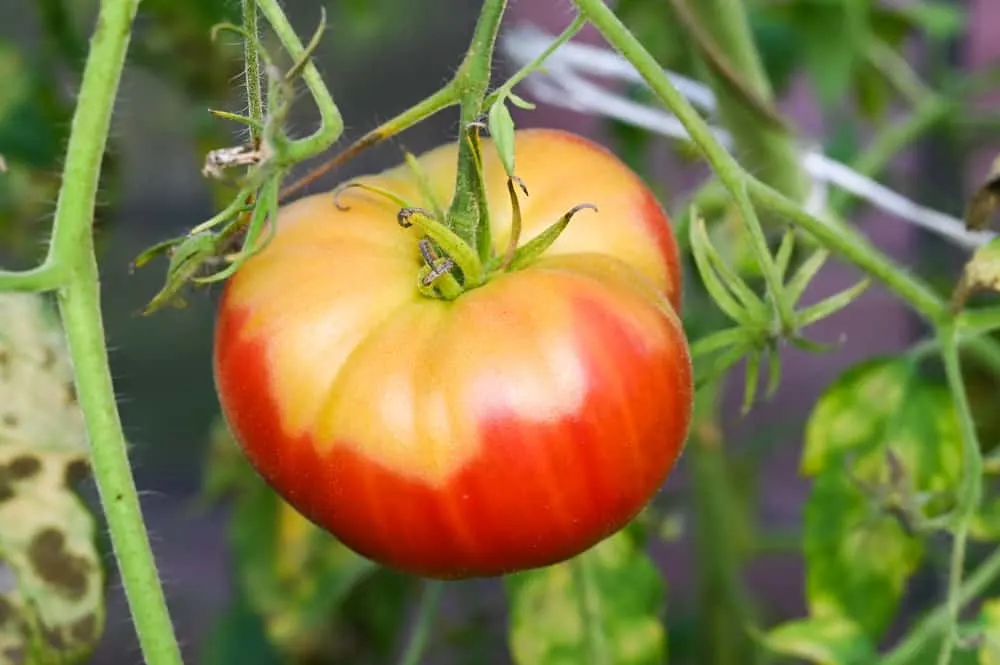
Green shoulders occur when the unripe top section of your tomato remains green and hardens.
As the tomato starts to ripen, chlorophyll (the pigment that gives young tomatoes their green color) begins to break down and is replaced by lycopene. Lycopene is a pigment that gives tomatoes, and other red or pink fruits, their red color when ripe.
Lycopene production occurs best between temperatures of 65-75F. Temperatures that rise and stay above 70F consistently hinder lycopene production.
Even though tomatoes often thrive in the heat, it is this constant exposure to heat that affects their shoulders. An increase in humidity can also cause temperatures in and around the fruit to remain high.
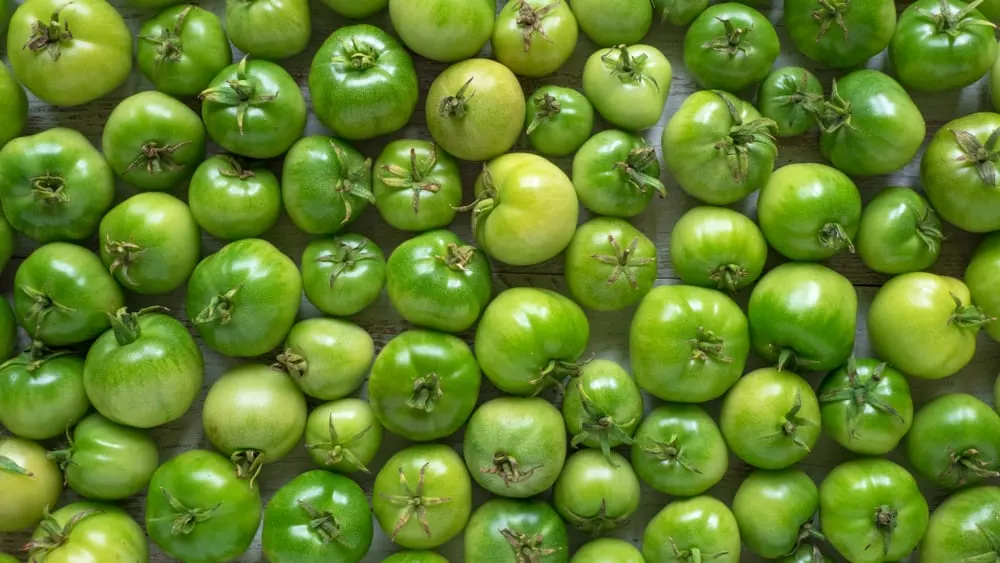
Heat also affects chlorophyll. Too much heat prevents chlorophyll from breaking down, either altogether or too slowly.
Ripening tomatoes exposed to too much heat and sun for long periods will cause chlorophyll to hang on, leaving your tomatoes green.
The lower parts of the tomato remain protected from the foliage and the top of the fruit. Hence, the worst affected areas are around the stem.
What About Yellow Shoulders?
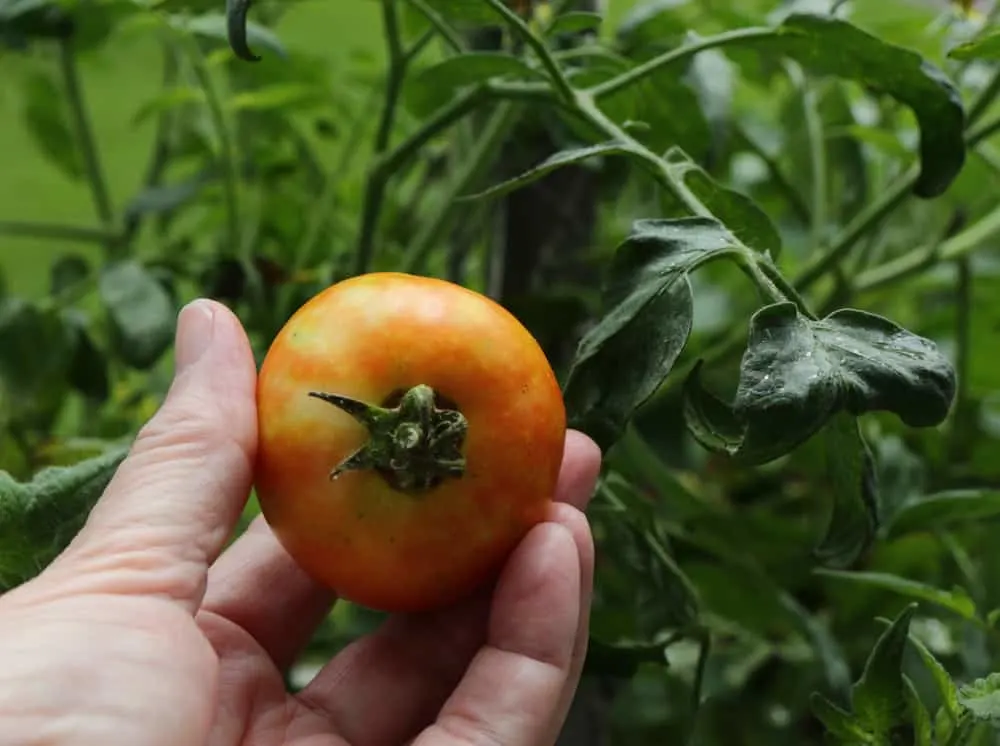
Yellow shoulder is essentially the same problem with a different name. Some horticulturalists use the names interchangeably as the shoulders turn a greenish or yellowish color.
Yellow shoulders also occur because of the lack of lycopene production, but research has shown that alkaline soil with low levels of potassium could cause yellow shoulder.
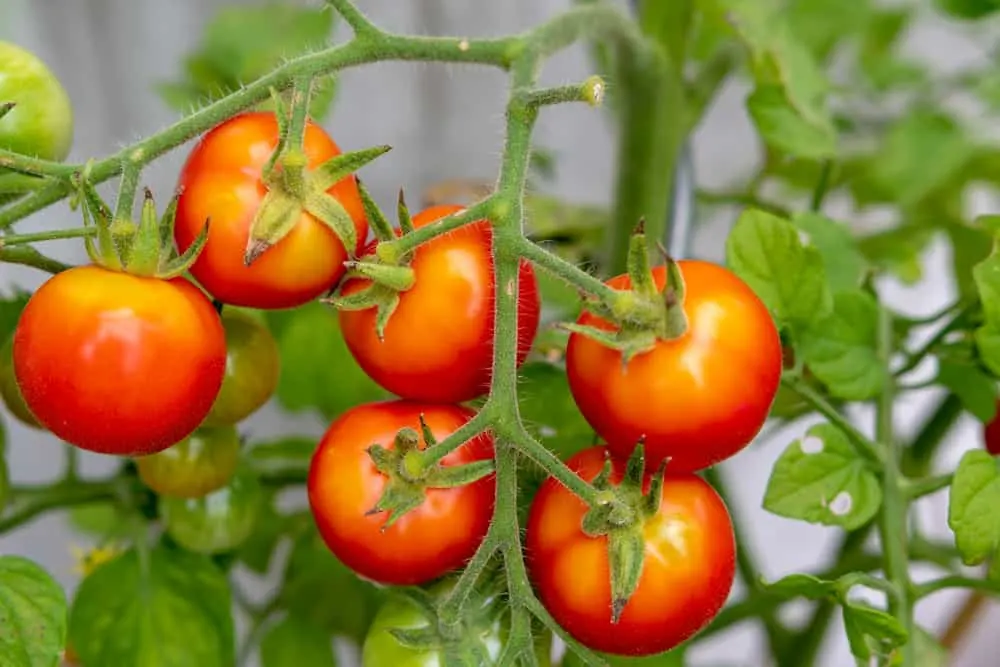
Other hypothesis state that too much beta-carotene could also be involved. Carotene is a pigment that gives plants orange hues. Exposing your tomatoes to too much sun causes carotene to be more prominent. That, combined with reduced lycopene production, causes the tops to stay yellow.
Yellow and green shoulder could also be a result of the type of tomato you are growing. Some are more susceptible to this condition than others.
Can You Eat Tomatoes With Green Or Yellow Shoulders?
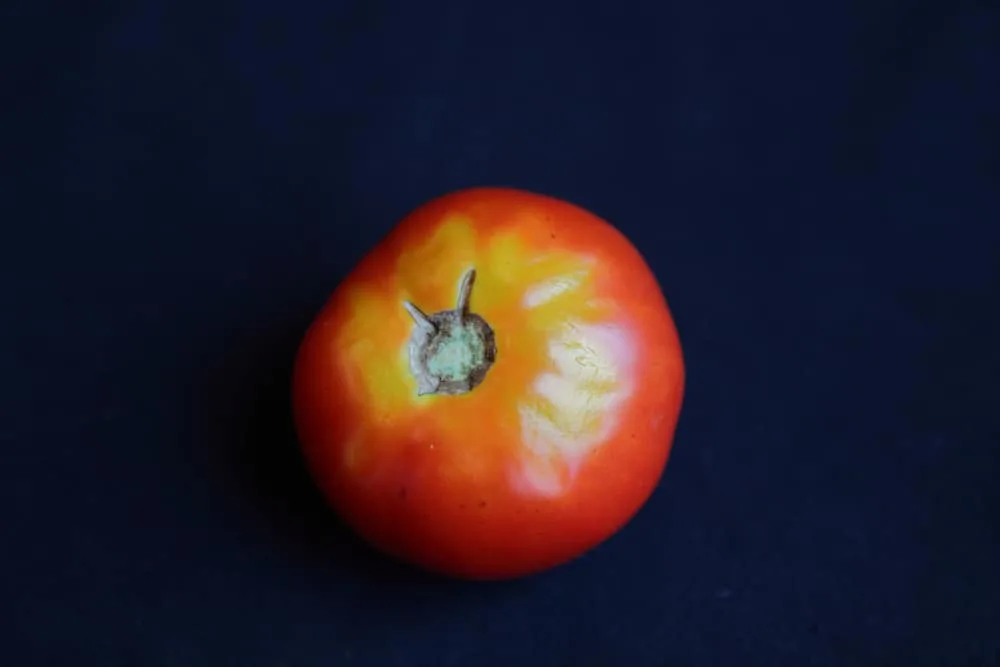
If you’ve ever eaten an unripe tomato (whether it be by accident or out of curiosity), you’ll know that it is usually sour and hard. That is what the ends of a yellow/green shouldered tomato will taste like.
Luckily, the rest of the tomato remains unaffected, and will be completely safe and delicious to eat. Just cut off the ends, and it will feel like your green shoulder problems never happened.
Preventing Green/Yellow Shoulders
Prune less
There is much debate around pruning tomato plants. There are certainly benefits – cutting back foliage increases airflow and keeps your tomato plant small and manageable.
Even better, it could produce greater, larger fruits. The increased airflow reduces the likelihood of disease and more energy is directed toward producing more fruit, instead of more foliage.
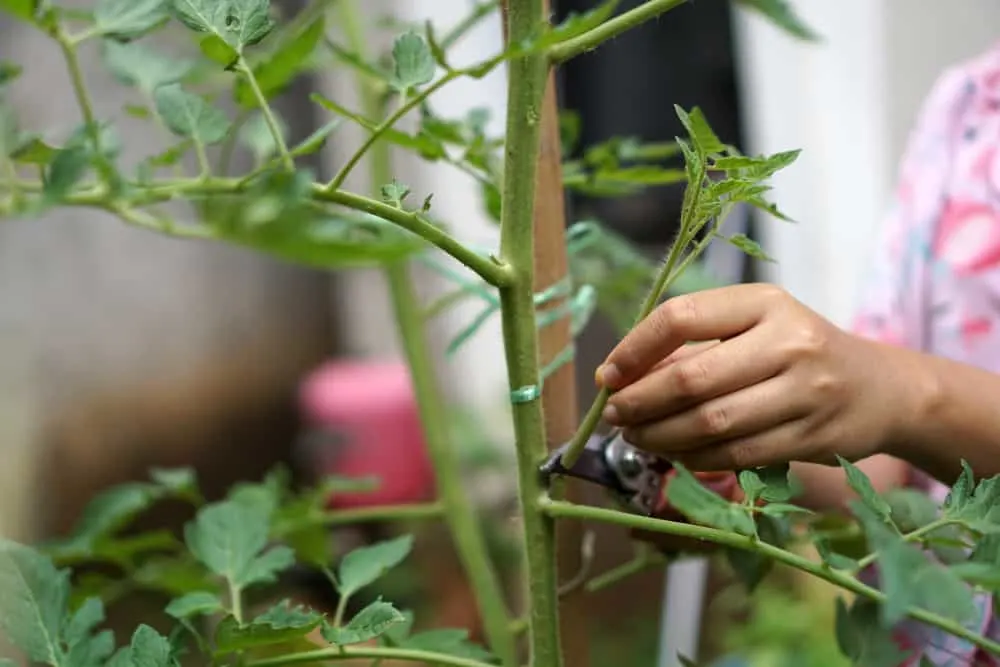
However, pruning too much could cause problems. Reducing the foliage around your tomatoes lessens the natural protection that the leaves give. You risk overexposing your tomatoes to the sun, which increases the risk of green and yellow shoulders.
Pruning is best reserved for indeterminate tomatoes as they continue to grow, rather than determinate tomato plants with a limited number of fruits that ripen all at once. Pruning should be done sparingly and at the right times to reap the benefits.
Provide shade
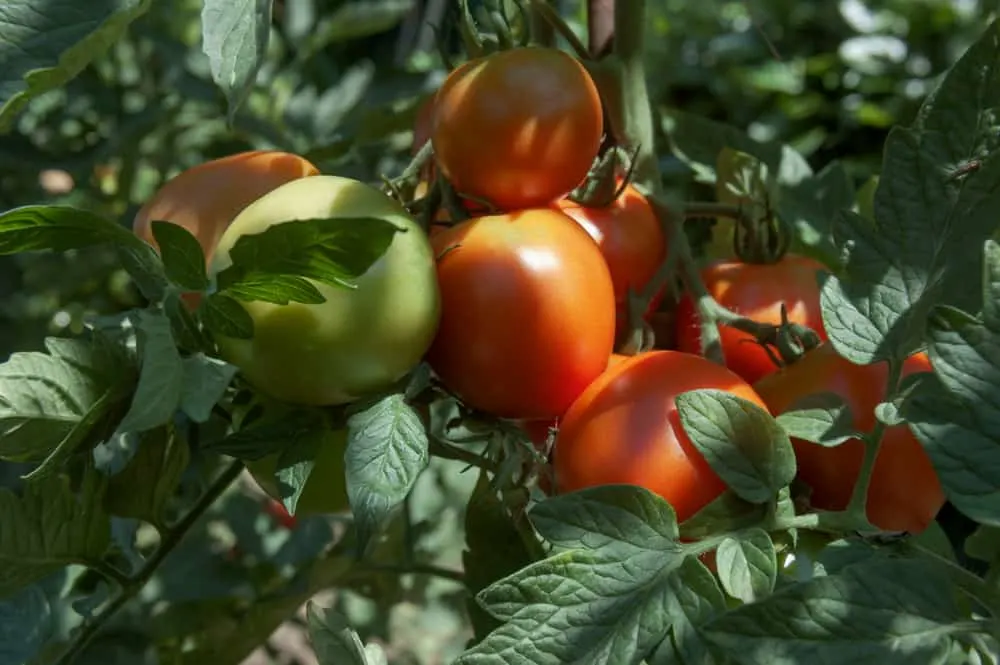
Tomatoes love the sun, but its rays are one of the key causes of green or yellow shoulder. Shading tomato plants is one of the best ways to protect your tomatoes from the relentless sun, while still giving them all the light they need.
Doing this correctly will maximize photosynthesis while reducing heat build-up. It will also improve the tomato’s overall health as it won’t lose too much water, allowing the plant to spend all its energy on producing larger, redder tomatoes.
One way to shade is to simply plant your tomatoes in areas around your garden where natural shade is created during the day. In high-heat climates, plant them next to an east-facing wall so they receive full morning sun but remain protected from the full extent of the afternoon’s rays.
The most common way to shade your tomatoes through minor heat waves is to use a supported shade cloth structure. This is a temporary solution that fits everyone’s needs. Depending on the type and density of the cloth, you can create more or less shade based on the plant’s requirements.
Choose the right variety
Some varieties of tomatoes are more susceptible to green shoulders than others. Heirloom tomatoes are typically more susceptible than hybrid tomatoes. Some gardeners have found that dark purple or black varieties are also more likely to develop green shoulders than red, yellow, or orange ones.
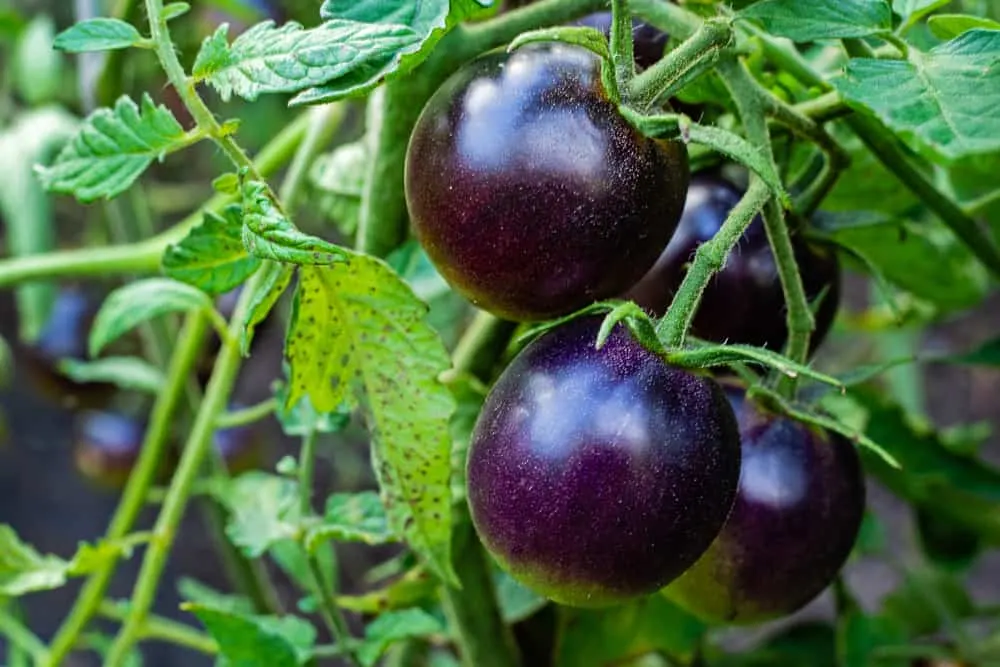
Keep a lookout when buying your seeds or young plants to determine which types are prone. The seed packet may also mention resistance to the condition – ideal for extremely hot climates.
Ripen off the vine
Picking your tomatoes just before they’re ripe may help prevent yellow and green shoulder, as they will no longer be in direct sunlight and extreme heat. This is for extreme cases – you don’t want to compromise the flavors we love from vine-ripened tomatoes.
It is best to pick healthy-looking tomatoes when they are on the verge of ripening – typically when a little bit of red begins to peak through the green skin. Left alone on the kitchen counter, they will continue to produce their ethylene gas and ripen, but it may take a while.
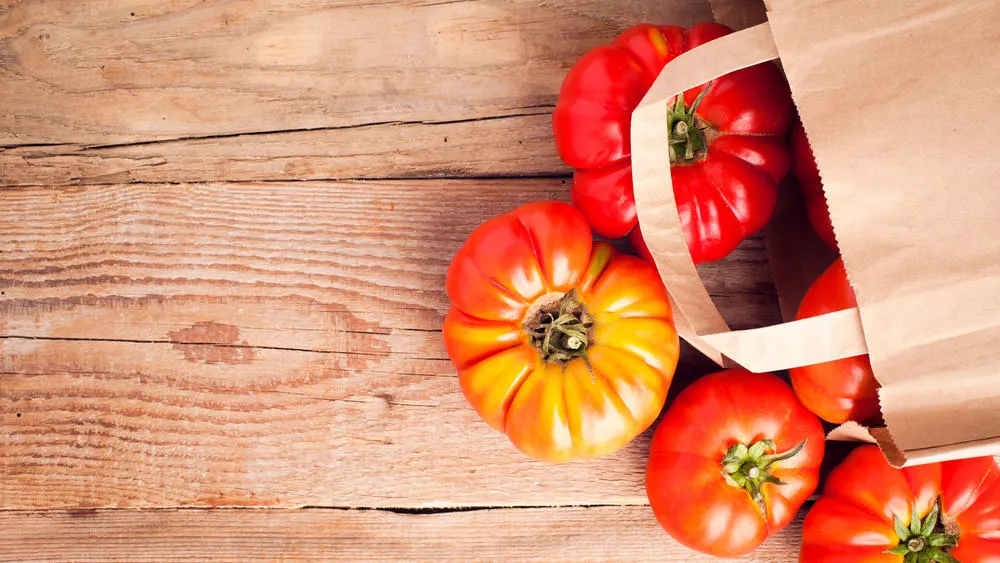
To speed up the process, store your picked tomatoes with ripe apples or bananas, as both produce ethylene gas. A cardboard box or even a paper bag stored at room temperature away from the sun will work. Ensure good airflow and low humidity levels to assist the ripening process.
Ultimately, green or yellow shoulders are not the end of the world. Once chopped off, your tomatoes will still be perfectly edible. But while it’s not the end of the world, it’s certainly not ideal either. Implement these tips to protect your tomatoes from green shoulders, and you can avoid this pesky problem altogether.

